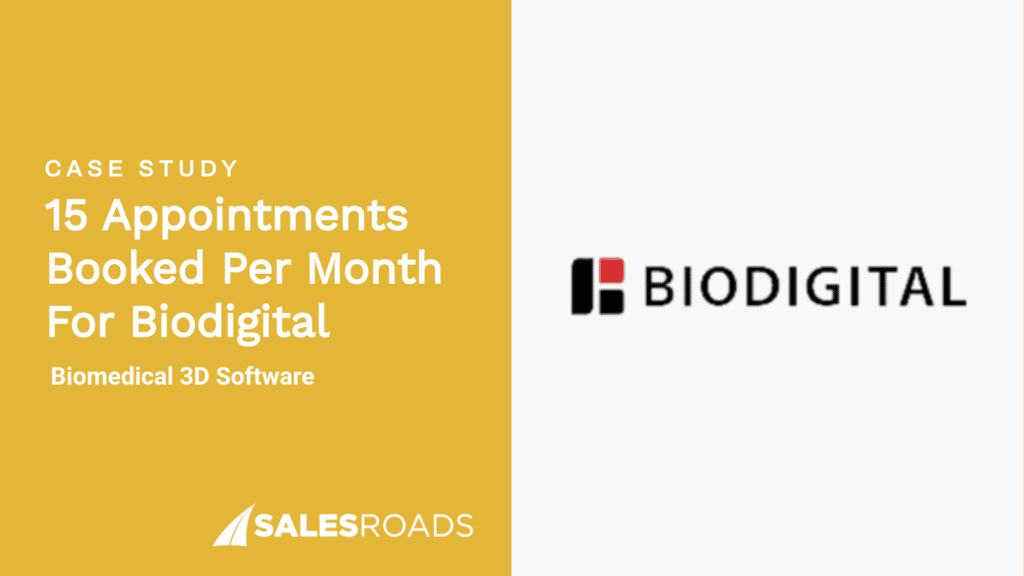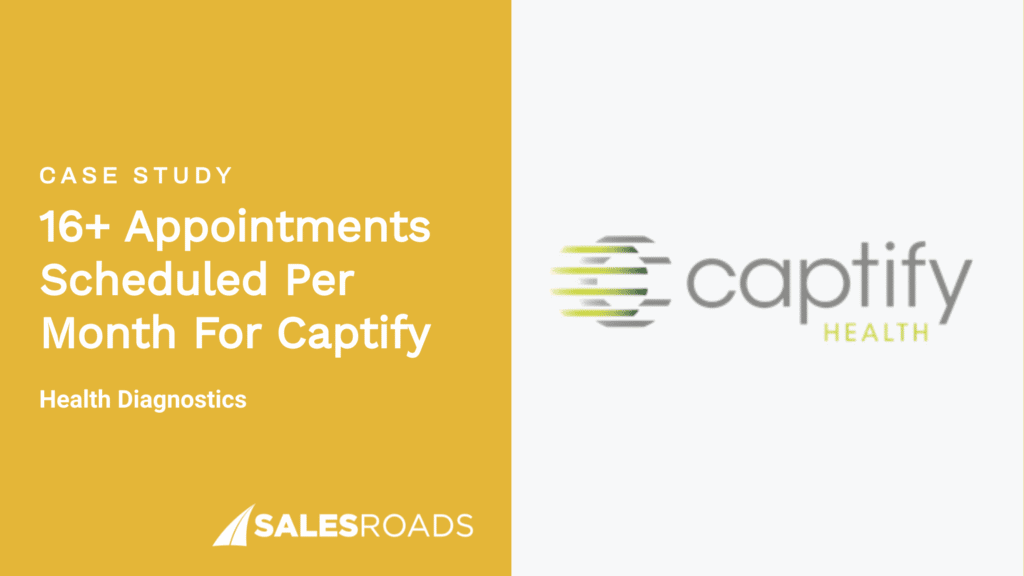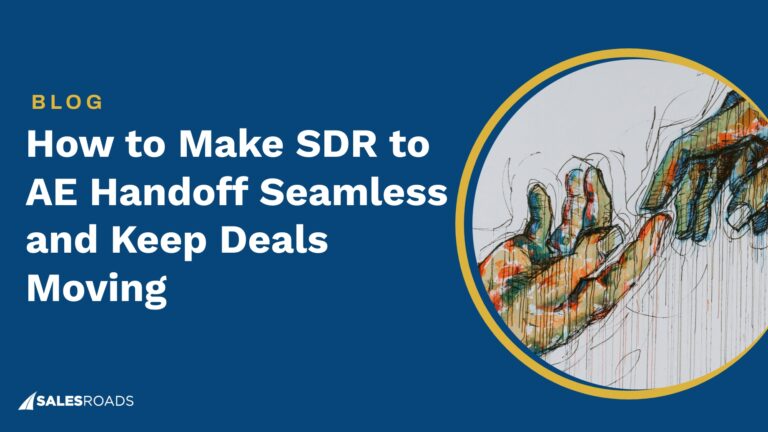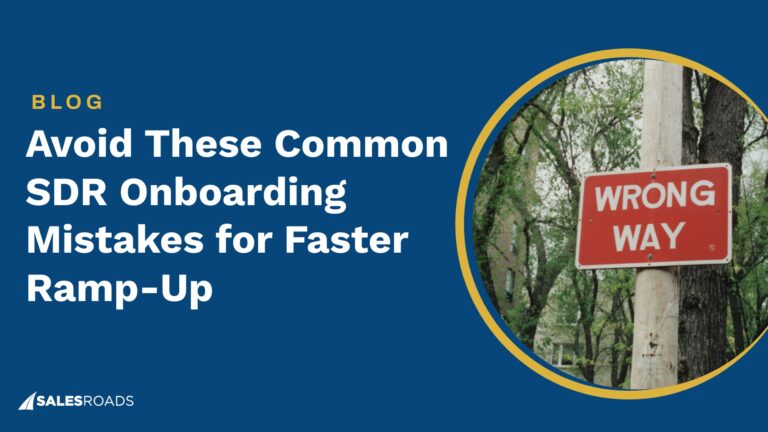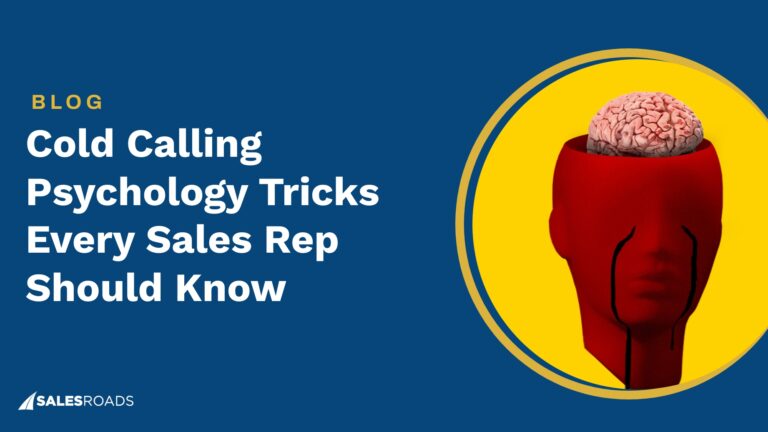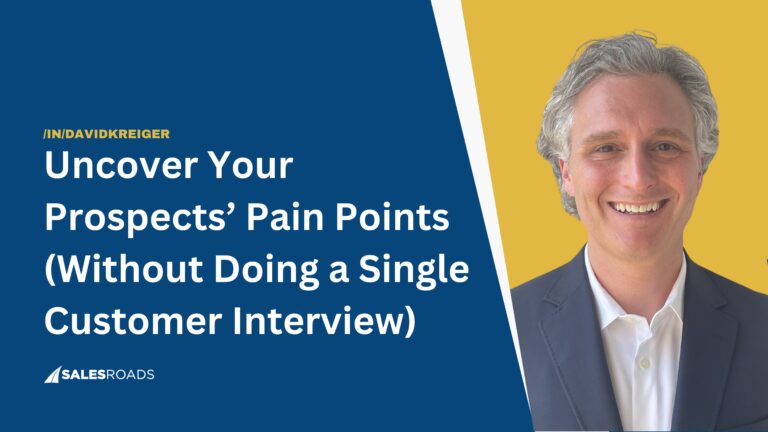Startups often face a tricky balancing act when it comes to hiring their first sales rep. Some founders hesitate, holding back until their sales team is overwhelmed, missing out on valuable leads. Others jump too soon, adding SDRs before their outbound process is defined, leading to wasted time and money.
Hiring an SDR too early can burn through resources without delivering pipeline growth. But waiting too long can limit your market reach and slow down your revenue engine.
Knowing the right time to hire an SDR isn’t just a tactical decision; it’s a strategic one.
When Should You Hire an SDR? Key Readiness Indicators
Hiring an SDR is a pivotal move, but the timing needs to be right. Here are the key indicators that signal it’s the right time to bring your first SDR on board:
You’ve Validated at Least One Outbound Message That Converts
Before you hire someone to run outbound campaigns, you should already know that outbound works for your business. This doesn’t mean it needs to be perfect or scaled; it just needs to show promise.
Track reply rates, meeting conversions, and deal influence from your early outbound efforts. Even a few successful touchpoints can be enough to signal readiness.
Ask yourself:
- Have you sent cold emails or made cold calls that led to real meetings?
- Have any of those meetings turned into pipeline or closed deals?
- Is there a specific message or value proposition that seems to consistently resonate?
If the answer is yes, you’re no longer guessing; you’re optimizing. That’s when bringing in an SDR makes sense. They’re there to scale what works, not figure out what might.
Founders or AEs Are Spending Too Much Time Prospecting
In the earliest stages, it’s common (and healthy) for founders or Account Executives to handle their own prospecting. It helps them stay close to the market, refine messaging, and validate ICP.
But this shouldn’t last forever.
If you are spending more than 30–40% of your time building lists, sending emails, and chasing unqualified leads, you’re probably losing ground on higher-impact activities like closing deals and managing customers.
That’s a strong operational signal that it’s time to delegate pipeline-building to someone focused exclusively on it: an SDR.
You’ve Achieved Early Product-Market Fit and Have a Clear ICP
Outbound is only effective if you know who you’re targeting and why. If your product is still a moving target and your buyer personas are unclear, it’s too early.
Before hiring an SDR, you should:
- Know your ICP, firmographics, pain points, buying triggers.
- Understand who typically champions or blocks your deal (your buyer personas).
- Be able to describe the specific value your product provides to that audience.
Your SDR doesn’t need to be an expert in your space, but they do need a well-defined prospect list and a reason to believe your offer is worth a conversation. That’s only possible when product-market fit is taking shape.
Your Pipeline Needs Support at the Top But Your Team Can’t Keep Up
One of the clearest indicators you’re ready for an SDR is when you’ve built a process for closing deals, but you can’t keep the pipeline full enough to feed it.
Suppose your sales team has clear closing processes and reliable conversion rates from demo to proposal to close, but not enough meetings at the top of the funnel. In that case, it’s time to introduce an SDR to focus on consistent outbound prospecting.
Think of SDRs as the engine that feeds your pipeline when your closers are firing but the leads aren’t flowing.
Bridge Group research shows SDRs generate a median pipeline of $3 million per year, typically supporting 2.6 Account Executives each.
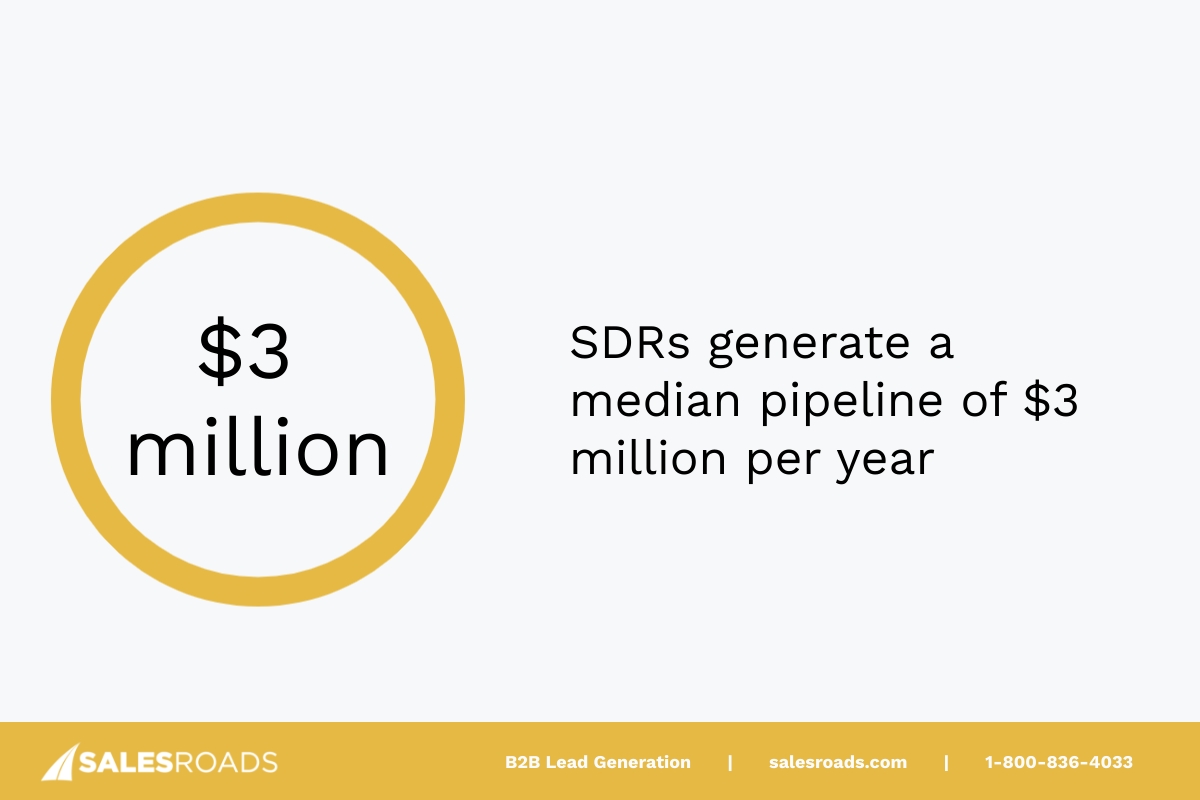
That’s the scale of pipeline contribution you’re missing without a dedicated outbound resource.
It’s time to install that engine.
You Can Support the SDR With Systems, Not Just Expectations
An often-overlooked signal is operational readiness. Hiring an SDR doesn’t mean you just hand them a list and ask for meetings. If you’re serious about success, you should have:
- A CRM or sales engagement platform in place (e.g., HubSpot, Outreach, Apollo)
- Defined outreach sequences or at least templates
- Someone (you or a sales manager) available for coaching and support
- A clear goal: meetings booked, pipeline contribution, or similar
If you lack these basics, your SDR will spin their wheels. When you have them, even if imperfect, you’re giving your new rep the foundation they need to be productive in their first 30–60 days.
In-House vs. Outsourced SDRs for First-Time Hiring
Once you’ve decided to hire an SDR, the next question is whether to build in-house or partner with an outsourced provider.
Hiring in-house SDRs gives you greater control over daily activities and ensures their messaging closely reflects your brand voice. However, building an in-house team comes with higher costs.
Beyond salaries, you’ll need to budget for benefits, tools, and training. For example, companies typically invest around $371 per month on sales tools per SDR.
The ramp-up time can also be slower, as recruiting and onboarding take time and resources.
On the other hand, working with outsourced SDRs offers a faster and more cost-effective alternative. Many agencies provide trained reps ready to execute with proven playbooks and established processes.
This approach is especially useful if you’re exploring outbound sales but aren’t ready to commit to full-time hires.
For many startups, outsourcing is the smarter first step. It lets you validate outbound as a growth channel before taking on the overhead of an in-house SDR team.
How to Prepare Before Hiring an SDR
Hiring your first SDR is more than just filling a role; it’s about setting up a system that allows someone else to scale your outbound efforts reliably.
If you want your first SDR to succeed, here’s exactly what you need to prepare:
1. Build a Clear, Documented Outbound Playbook
Think of your outbound playbook as the SDR’s instruction manual. It doesn’t have to be 50 pages long, but it does need to give your new hire clarity on what to do, how to do it, and who to go after.
At a minimum, your playbook should include a well-defined ICP, buyer personas, messaging frameworks, and tech stack walkthroughs.
Make your playbook a living document—start simple, then improve it over time with feedback from your SDR.
2. Define Clear KPIs and Expectations
Don’t hire an SDR without knowing exactly how you’ll measure their success. Vague goals like “generate leads” won’t help them, or you.
Instead, get specific with metrics such as:
- Meetings booked per week/month
- Email reply rate or call connect rate
- Sales Qualified Leads
- Pipeline value influenced
- Show rate or no-show rate for meetings
Also, clarify expectations around daily activity levels, response time to inbound leads or handoffs, and use of tools and data hygiene in the CRM.
Share these metrics during onboarding so the SDR knows what success looks like and how they’ll be evaluated.
3. Align Sales and Marketing on Lead Qualification
If your SDR is generating leads that sales doesn’t want to touch, you’re wasting time. Before you bring someone on board, get alignment between the teams on what constitutes a qualified lead.
Here’s what that should include:
- Lead scoring criteria: What firmographic and behavioral traits matter?
- Handoff process: What happens after an SDR books a meeting?
- Feedback loop: How should AEs communicate lead quality issues to the SDR?
If you’re the founder handling both roles today, write down the mental checklist you use to decide whether a lead is worth pursuing. Then turn that into a shared definition everyone can follow.
4. Set Up a Strong Onboarding and Training Plan
Even experienced SDRs need onboarding. Every company, market, and product is different. You’ll want a 30-60-90 day plan that sets realistic expectations and builds confidence.
Your onboarding should include:
- Product training: Demos, common use cases, competitor comparisons
- Sales training: How to use your tools, write personalized emails, make cold calls
- Shadowing sessions: Let them sit in on sales calls, then reverse-shadow yours
- Practice sessions: Mock calls, roleplay objections, and get reps in before real outreach
Keep in mind that SDRs ramp up in about 3.2 months but stay, on average, just 1.5 years.
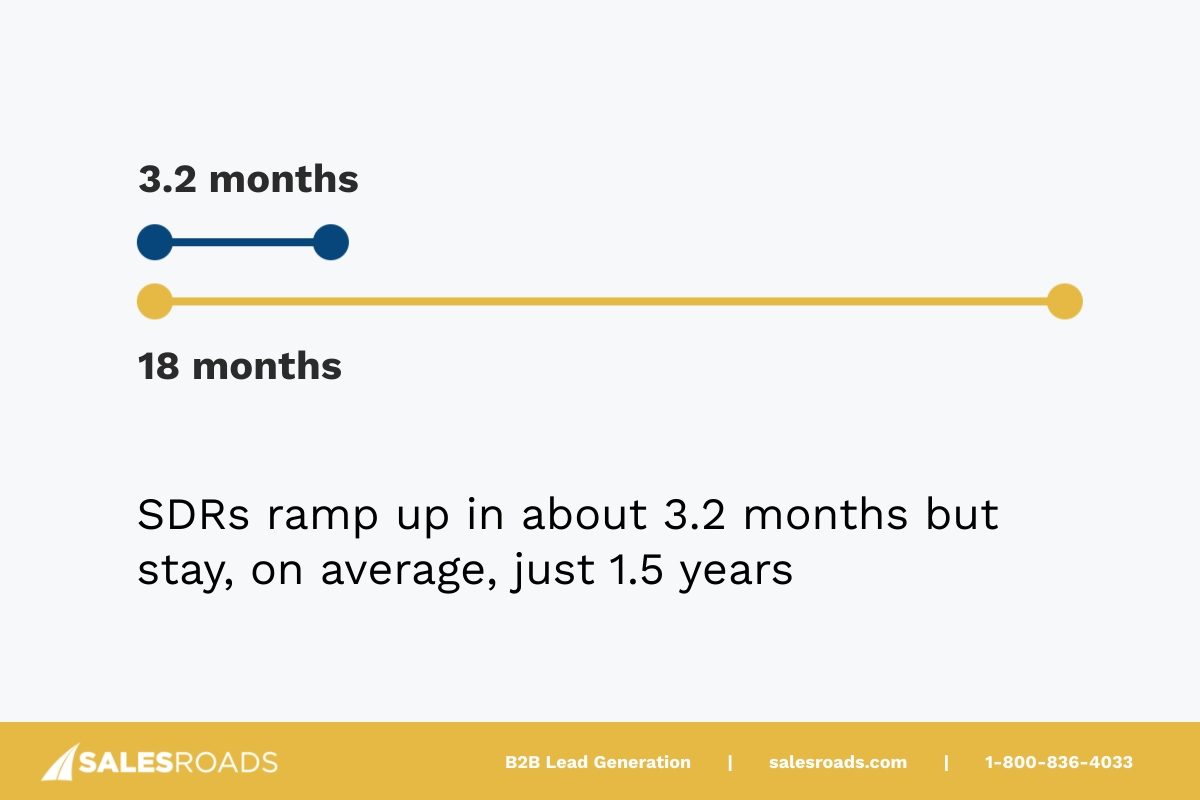
That’s why your onboarding plan matters.
You need to get them productive quickly to maximize their contribution during that limited window.
5. Give Them the Right Tools and Tech Access from Day One
Too many SDRs spend their first week waiting for logins. That’s a waste of time and enthusiasm. Before they start, make sure you’ve got everything ready such as CRM access, data tools, outreach tools, communication channels, etc.
Also, show them how to pull reports, review activity data, and access past conversations or closed deals for learning.
6. Create a Feedback Loop for Continuous Improvement
Your outbound process won’t be perfect on day one, and that’s okay. What matters is that you learn and improve quickly.
Create structured ways for your SDR to give and receive feedback. The more collaborative the process, the faster your SDR and your outbound system will evolve.
Remember: your first SDR is not just executing; they’re also helping you build your outbound engine.
Bottom Line
Knowing the right time to hire an SDR can help you scale faster and more sustainably. The key is understanding your sales readiness.
For early-stage companies, outsourcing SDRs can be a smart way to reduce risk and speed up execution without committing to full-time hires immediately.
If you need help scaling your outbound, SalesRoads can help you fill your pipeline faster with lower overhead.


